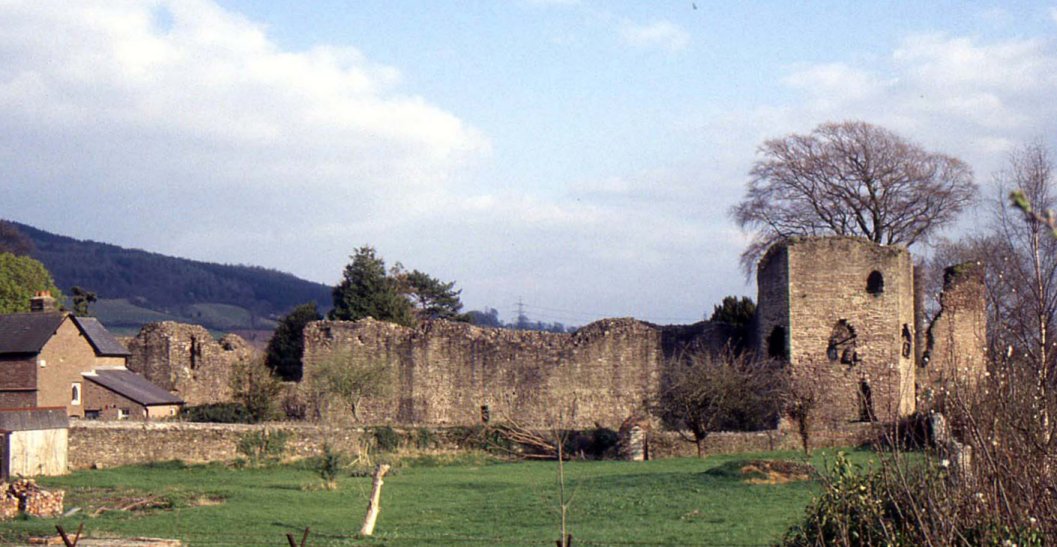Abergavenny

Abergavenny castle was founded on the site of the old Roman fort and vicus of Gobannium probably before the death of William the Conqueror
in 1087. His son, William Rufus (1087-1100) gave the castle to Hamelin
Ballon, who may have been the castellan for the fortress under the
Conqueror when there was a royal mint here. The early history of
this district under the Normans is obscure but the castle may have
formed an early triangle with the castles of Newcastle/Skenfrith, Grosmont and White Castle controlling the highlands inbetween. Grosmont certainly seems to have been founded by 1071.
Abergavenny passed from the Ballons to Brian Fitz Count who granted the
lordship to the earls of Hereford during the Anarchy for the service of
three knights in his war against King Stephen.
Grosmont was similarly passed to the service of the earl's son
for the service of one knight. On the extinction of this male
line, with the killing of Henry Hereford outside Abergavenny castle on
12 April 1165 by the local Gwentian Prince Seisyll ap Dyfnwal, the
castle passed to William Braose Senior (bef.1110-82) of Radnor castle.
In revenge for his murdered uncle, this William invited Prince
Seisyll to hear a royal proclamation at Abergavenny castle, and then
had him and his family and retainers killed at Christmas 1175. Consequently King Henry II had William stripped of his Welsh lordships,
which then passed to his son, another William Braose (bef.1155-1211)
who is often wrongly accused of the illegal executions. In 1182
the local Gwentian Welsh attempted to gain their vengeance when they
killed the sheriff of Hereford and routed William Braose at the battle of Dingestow
on 22 May and subsequently stormed White Castle and took Abergavenny
castle apart from the keep which they pelted with their arrows fired
from their deadly longbows.
In 1208 Abergavenny castle passed to the Crown on the forfeiture of William Braose,
but was retaken by his surviving sons in 1215. In 1230 the castle
passed to the Cantilupes on the extinction of the Braose's of Radnor, Brecon
and Abergavenny. In the spring of 1263 when the castle was under
royal guardianship a major battle was fought at Abergavenny with Roger
Mortimer of Wigmore and royal troops defeating and scattering a 10,000
strong Welsh force from Deheubarth under the command of Rhys Fychan. George Cantilupe was killed in 1273, possibly campaigning in nearby Brycheiniog,
and the castle passed to the Hastings family. In 1402 the castle
was refortified in opposition to the rising of Owain Glyndwr and
survived an attack in 1404.
The fortress today consists of the original motte and two or three
baileys. The stone keep has been replaced with a nineteenth
century building which now houses the town museum. A fortified
barbican runs up the east side of the mound, while a small bailey lies
to the north which contains a fine garderobe turret and semi-octagonal
tower. The hall where the massacre occurred in 1175 can still be
seen between this and the fifteenth century gatehouse. To the
south was a large rectangular tower of which little remains.
Copyright©2010
Paul Martin Remfry

